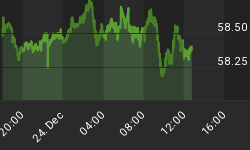Gold is soaring past an eight-year high now, even as equities are rebounding, in a bizarre setup that sees the two moving in lockstep when traditionally gold would be a safe haven asset that replaces money in the stock market in times of crisis.
What it means is that our favorite safe haven asset is acting more like a riskier asset as it passed the psychological resistance point of $1,800 on Tuesday--a place it hasn’t been since 2011.
Driving gold up are plunging U.S. bond yields that do not seem positioned to reverse, amid economic recovery that appears to be flattening, another surge in coronavirus cases, and the political drama building ahead of November presidential elections.
After gold’s rally Tuesday, and then its slight--and temporary retreat Wednesday--some analysts thought that was it.
“Gold has been overbought quite a bit after it surpassed the $1,800 level and now we are seeing some investors selling off,” CNBC quoted Edward Meir, analyst at ED&F Man Capital Markets, as saying.
But it was just a blip.
By Friday morning, gold was at $1,806, and growing numbers of analysts were looking ahead at the next psychological resistance point: $2,000.
Galaxy Digital CEO Michael Novogratz told CNBC that the “macro set-up is so perfect for something like gold”.
Why? Because the Fed and global central banks are on a money-printing free-for-all.
“Gold is going to take out the old highs, $1,950 or something, and it is going to keep going. I think we are just starting this move,” Novogratz said.
Likewise, ABN AMRO precious metal strategist Georgette Boele on Thursday reaffirmed her outlook for gold prices to end the year close to $1,900 an ounce, but updated her 2021 forecast to around $2,000 an ounce--up from $1,800 earlier.
“Now the psychological resistance of USD 1,800 per ounce has been surpassed. It seems that investors will only be satisfied if the former peak in gold prices at USD 1,931 per ounce is reached and taken out. Above that the important psychological level of USD 2,000 per ounce is within reach,” Boele wrote in a report, as carried by Kitco.
In a Thursday note to clients cited by MarketWatch, Renaissance Macro Research chairman Jeff deGraaf referred to the “continued tailwind for gold”, noting: “As real yields turn negative, opportunity costs for holding non-yielding assets essentially vanish, particularly when viewed through the historical lens of fiat currencies and their purchasing power. ”
In other words, gold has been rendered even more precious because it now is combining the ultimate elements: speculation and virtually no yield at the precise time that equities also have almost no yield.
The remaining million-dollar question is this: Will real yields now rise on future stellar economic performance, or will they continue to fall?
It’s really a political question at this point, and it will depend on who is in charge of the COVID economic recovery: The Fed or the White House.
If it’s the Fed, as posited by the Wall Street Journal, “that would likely mean lower yields for even longer” if history is any indicator.
As it stands, it’s looking good for gold, with the Fed warning that the second rally of COVID infections could freeze economic recovery altogether.
By Michael Kern for Safehaven.com
More Top Reads From Safehaven.com:

















